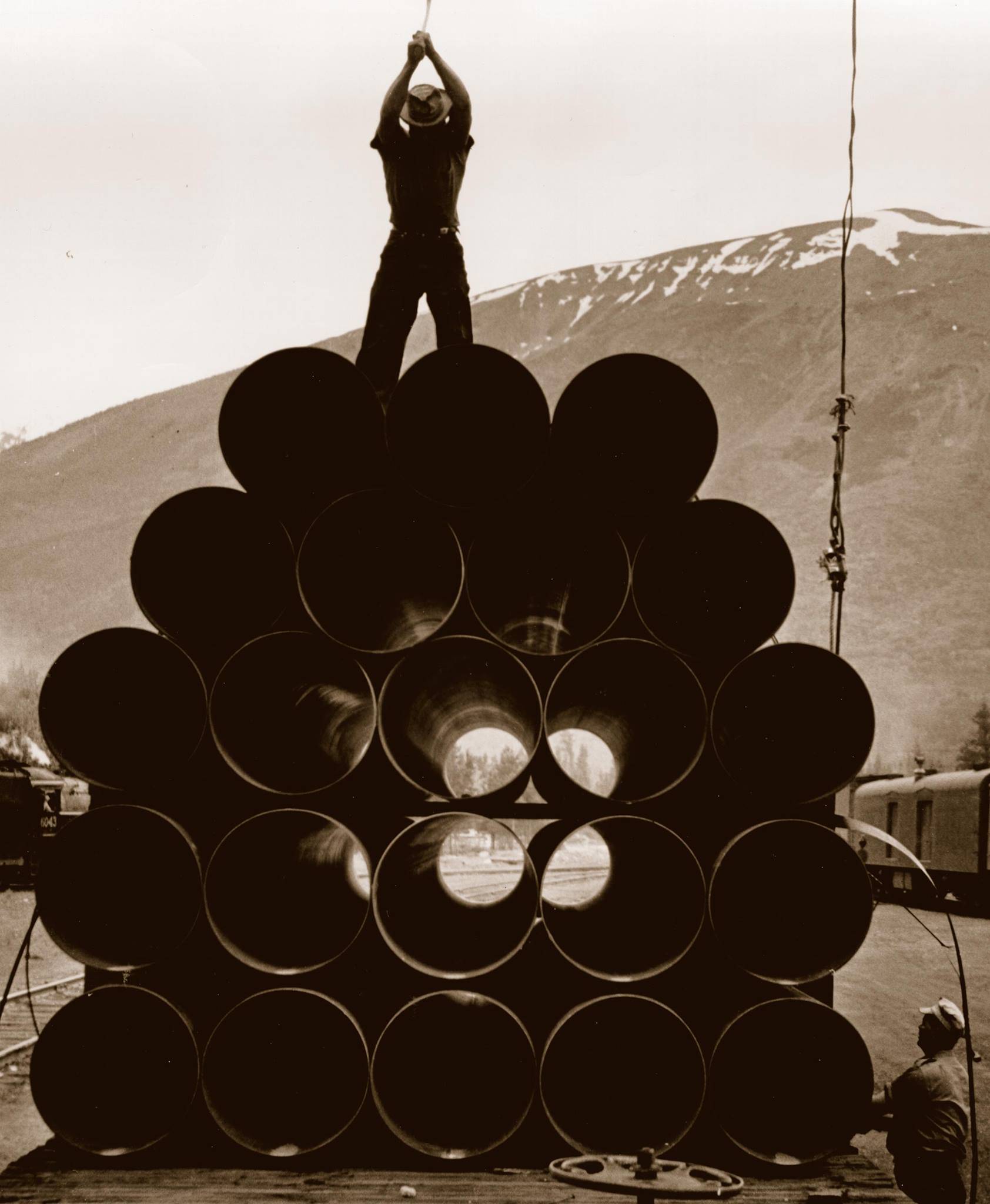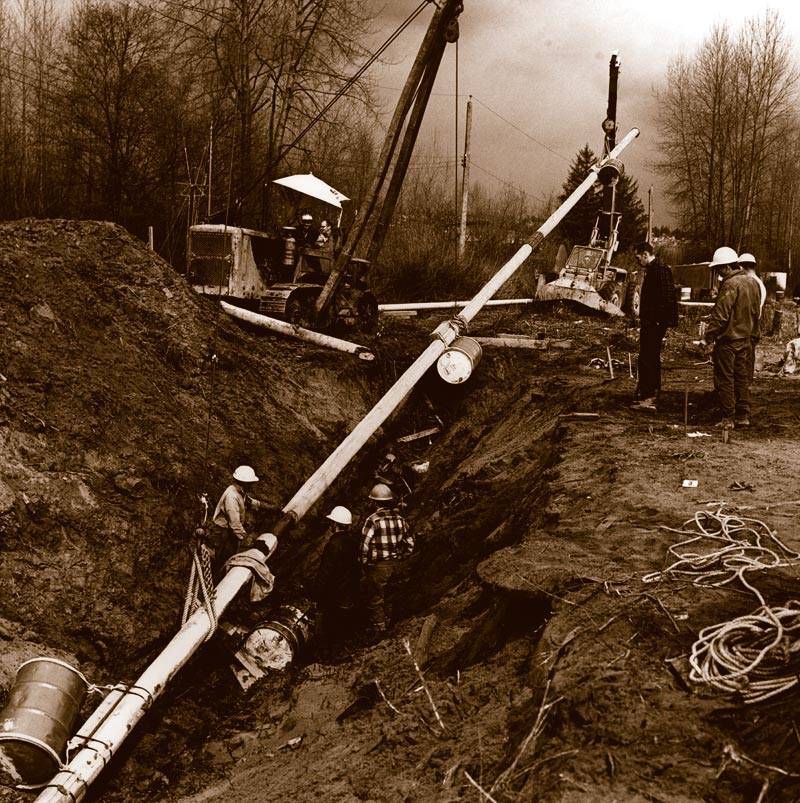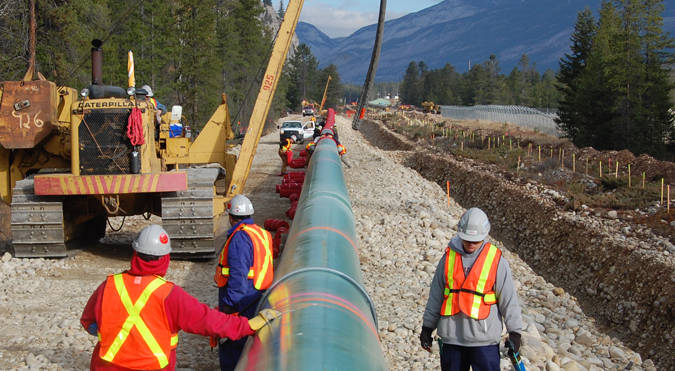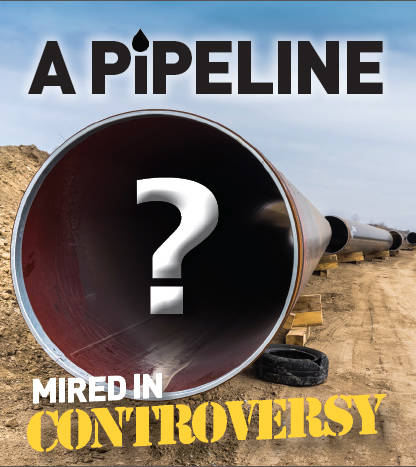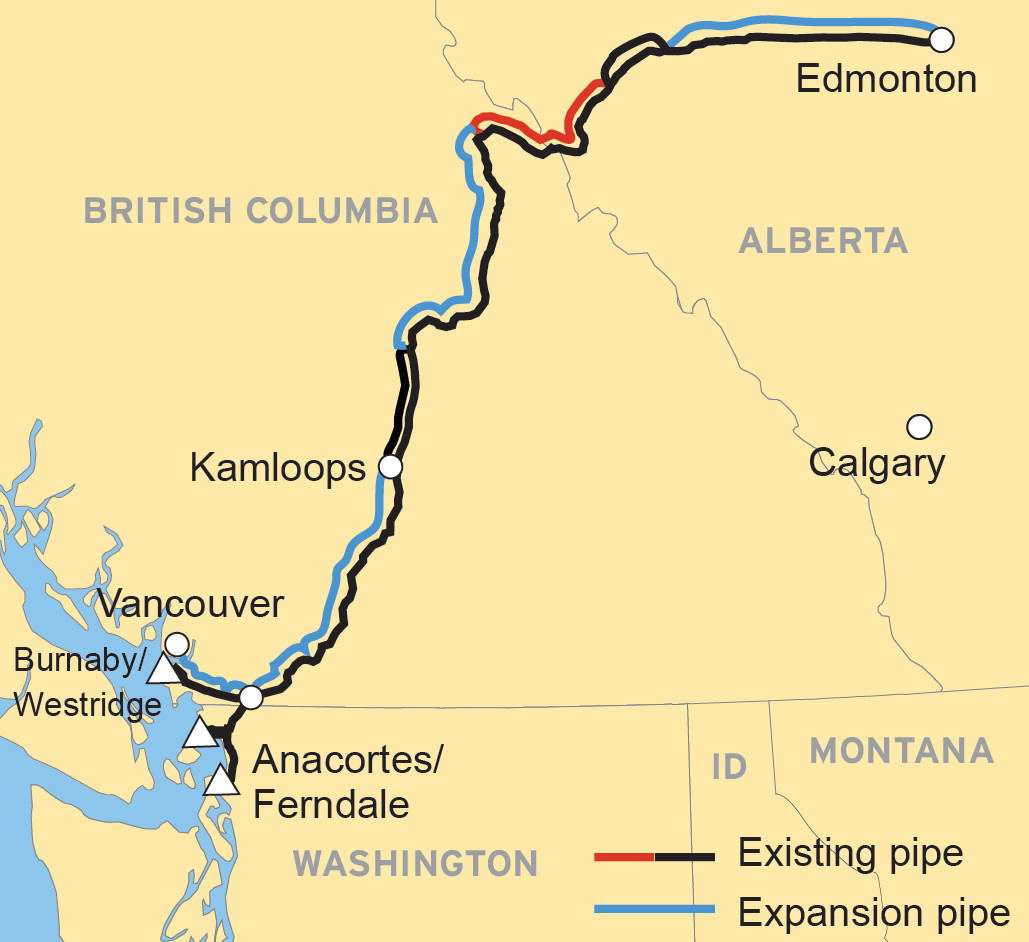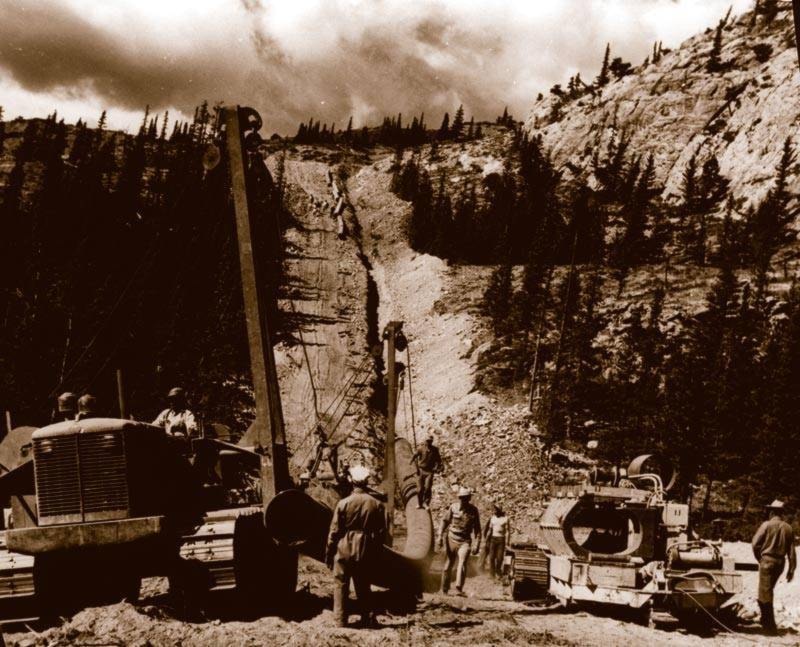By Rod Link
This is the first story in a five-part series on the issues surrounding Kinder Morgan’s proposed expansion of the Trans Mountain pipeline, investigating the history, science, Indigenous reaction, politics and economics of the controversial project. The full series will appear on our website starting May 26.
Most people would be surprised at how Kinder Morgan’s current Trans Mountain Pipeline system is embedded within everyday lives and within the fabric of B.C. and beyond.
The next time you fly from Vancouver International Airport, consider how the fuel for your aircraft got to the airport. It arrived via a 41-kilometre pipeline through Kinder Morgan’s Burnaby tank farm, currently ground zero of protests in the campaign against the company’s embattled plan to twin its main pipeline running 1,150-km near Edmonton to B.C.
Drive a car? Chances are the gas arrived through that same main pipeline.
Live in Kamloops? It’s the first off-loading point for refined fuels pumped through that main line.
And as part of the complex network of pipelines criss-crossing the continent carrying crude to refineries, a branch of the main line transports Alberta crude to a terminal at Sumas near Abbotsford to feed refineries in northwestern Washington State.
Kinder Morgan’s expansion sits squarely within this context – a continuation of what began more than 70 years ago when a geyser of crude erupted from Leduc No. 1 on Feb. 13, 1947.Alberta strikes oil in 1947
Geologists had long been convinced oil could be found in Alberta. Beginning in the 1920s, assisted by provincial subsidies and tax incentives, companies began drilling but met with little success.
By many accounts, Leduc No. 1 was to be the last attempt by Imperial Oil to find oil in a promising area surrounding the rural community south of Edmonton.
When it began producing, and with drilling success from other wells following, the Alberta government’s vision of diversifying the province’s economy, combined with the profit incentive of oil companies, began to take hold.
Finding oil was one thing, transporting it to refineries located elsewhere was another, paving the way for pipeline infrastructure to points east and south, as well as to B.C., to not only supply fuel for the provincial economy but also across the border to new refineries in Washington.
Three pipeline proposals were soon being promoted, and in the end, the Trans Mountain Oil Pipeline Company was given the nod. With the legislated backing of the Alberta and federal governments, and with the support of the B.C. government, plans were quickly put into place.
Compared to today’s highly regulated environmental laws surrounding large-scale industrial projects with a multitude of competing interests to be considered, approval was astonishingly swift – just three days of hearings conducted by the federal Board of Transport, a predecessor to today’s National Energy Board.
The board determined the project to be in the public interest, as did politicians and industrialists.
First pipeline finished in 1953:
Construction began in 1951 using a small army of workers spread along the 1,150-km route carving through flat terrain, mountainous passes and alongside rivers. Finished in 1953, the pipeline had an initial capacity of 150,000 barrels a day, sufficient to meet demand at the time.
“Oil is on the way to range itself beside wheat, lumber and iron as yet another of our great Canadian natural resources on the export list,” Shell Canada president W.M.V. Ash told a Canadian Manufacturers Association audience in Vancouver in March 1953.
The branch line to Sumas was completed in 1954 so crude could flow to the growing number of refineries in Washington State, a sign that Alberta oil was being integrated into the international scope of the industry. Over the succeeding years, the fortunes of the pipeline ebbed and flowed depending upon the demands and needs of oil companies seeking the best markets – and prices – for their product.
Still, capacity gradually increased through twinning or looping some sections and by adding pumping stations to meet the needs of customers. Diversification of product also occurred, so that the pipeline today – unique in Northern America – moves crude as well as refined products.
Oilsands development drives pipeline need:
As the Trans Mountain pipeline evolved, so did the nature of oil exploration in Alberta, with growing interest in the Athabasca oilsands. That accelerated in the mid-1980s and into the 1990s, spurred on by the growing demand for oil and encouraged by government assistance and subsidies. With the volume of heavy crude from the Athabasca region increasing and the resulting need to get the product to refineries, the first sign of things to come took place in 2004 when Trans Mountain began promoting its Anchor Loop project.
This was to be a 160-km line running adjacent to the main line between Hinton, Alberta and a location in B.C. called Rearguard, near Tete Jaune Cache. This section ran through Jasper National Park and Mount Robson Provincial Park, but appeared to draw little of the fierce attention now being focused on the expansion project.
Kinder Morgan Canada’s press release of Oct. 31, 2006 announcing National Energy Board approval left little doubt about the company’s long-term intentions, saying the project “will increase the ability of Canadian producers and marketers to access growing markets on the West Coast as well as Asian markets.”
Company president Ian Anderson added this in the same release: “Approval for the Trans Mountain Loop really sets up the next phases of expansion, which will enable us to expand the pipeline system both south (serving markets in the Lower Mainland of British Columbia and Washington State) and north (to a deepwater port facility in the Kitimat region that would primarily serve markets in Asia).”
Finished in 2008, the Anchor Loop project boosted capacity to 300,000 barrels a day, concentrating on moving heavy crude and, crucially, engineered so that it could be integrated into any further mainline expansion project southward.
